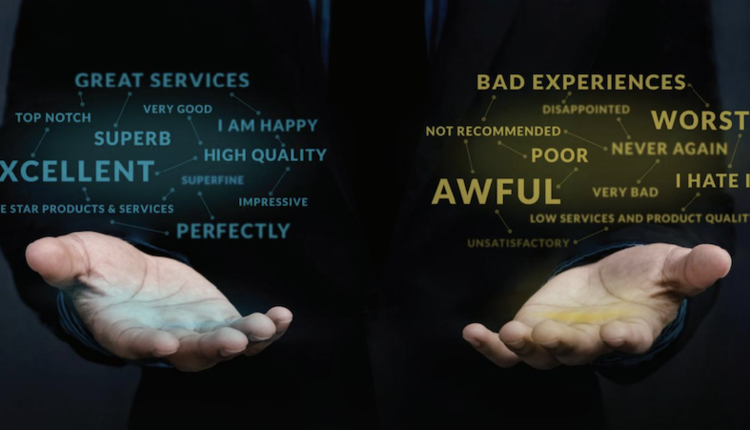
Image by: seb_ra, ©2019 Getty Images
With 20 years in the customer communications management (CCM) industry under my belt, I have witnessed some well-designed communication systems that remain in production for approximately seven to 10 years.
Unfortunately, poorly implemented systems become like a black hole over time—impossible to escape because of the growing importance around all the accumulated complexity of the solution. So, how does a company get out from under a poorly implemented CCM system for a more streamlined, effective, and efficient approach?
A few years back, I wrote an article about the return on maintenance, which I defined as the amount of benefit you receive compared with the amount of money you pay over time for maintenance services. Since that time, many organizations have likely paid for software maintenance that nears—if not exceeds—the original purchase price of the CCM system. Even if you are a subscription or SaaS user, you can still calculate return on maintenance as the rerun on the service.
You may be thinking, “No way! I didn’t pay that much in the last four years.” But if you calculate an average annual maintenance cost ranging from 18% to 22% and then add in an annual increase rate ranging from two percent (at the low end) to four percent (with some fees reaching 10% at the high end), it is likely that your last five years of maintenance spending has exceeded your original purchase price.
To determine the return you receive from your CCM software investment, here are some questions to ask yourself.
A few years back, I wrote an article about the return on maintenance, which I defined as the amount of benefit you receive compared with the amount of money you pay over time for maintenance services. Since that time, many organizations have likely paid for software maintenance that nears—if not exceeds—the original purchase price of the CCM system. Even if you are a subscription or SaaS user, you can still calculate return on maintenance as the rerun on the service.
You may be thinking, “No way! I didn’t pay that much in the last four years.” But if you calculate an average annual maintenance cost ranging from 18% to 22% and then add in an annual increase rate ranging from two percent (at the low end) to four percent (with some fees reaching 10% at the high end), it is likely that your last five years of maintenance spending has exceeded your original purchase price.
To determine the return you receive from your CCM software investment, here are some questions to ask yourself.
1. Do you make a lot of support calls?
Many of you probably work at companies that are fully staffed with expert users, so the chances of recuperating value from technical support is probably low. It's important to remember that part of your return on investment (ROI) for the CCM system is the value you gain from the availability of support. If you have had the system in place for a long time, you're not gaining enough valuable return on maintenance from support.
2. Have you implemented updates?
Many CCM systems are treated as “set it and forget it” solutions that receive minor design and content updates. Four years ago, I reported that the industry’s average interval between major software releases was more than 24 months (it was actually 37 months to be exact). Today, it's creeping closer to more than 48 months, reducing the amount of innovation you can access at useful intervals. On the other hand, you might want to check the release notes since your last installation to determine why you're not innovating at the speed of your platform—you might find some return on maintenance by updating your version.
3. Did your enterprise make any radical communication design updates?
Before you answer no, take a look at your website. You might have some new web-based, self-service sign-up programs, a new mobile account management app, or a new multi-factor authentication program that spans across your web, mobile, and email channels. If you notice design updates in channels that you aren’t guiding, you need to find out who is making those decisions and ask them how you can support their work with data, content, and designs you already have. That can drive significant return on maintenance for your CCM system.
4. Does your legacy software ease integration into new systems?
Your return on maintenance should include modernization efforts to help enable enterprise-wide architectural updates. It's critical for your system to facilitate new integration trends with other technologies, like customer relationship management (CRM), robotic process automation (RPA), enterprise content management (ECM), business process automation (BPA), digital experience platform (DXP), customer journey mapping (CJM), customer journey analytics (CJA), or other systems.
5. Do you receive user interface updates that make the system easier to use?
This is especially important for new designers who are fresh out of school and aren’t familiar with older interfaces. You might end up spending more to train recent graduates on antiquated techniques. If this is the case, your return on maintenance is diminished because your training expenses are increased. It can also be more difficult to find new employees to join your team, as few will be enthusiastic to learn all about your COBOL sorting routine.
6. Did your design time decrease for the same number of applications?
If your designers can't handle more projects in less time, then the return on maintenance for the CCM system has decreased because your design costs are not scaling as well as they should. New applications need to be designed to deliver to multiple channels—without adding an additional burden to the line of business content owners. They shouldn't have to replicate their changes for each channel simply because you have a single-channel design constraint.
To ensure a high return on maintenance, it's important for organizations to examine the upgrade offers from their vendors. Inquire how much investment is dedicated toward new functions for existing products. Find out how much this represents in terms of a percentage of innovation. Ask about the ratio between support staff and innovation-focused engineers. The answers to these questions will help you ensure that a high return on maintenance is being delivered.
To ensure a high return on maintenance, it's important for organizations to examine the upgrade offers from their vendors. Inquire how much investment is dedicated toward new functions for existing products. Find out how much this represents in terms of a percentage of innovation. Ask about the ratio between support staff and innovation-focused engineers. The answers to these questions will help you ensure that a high return on maintenance is being delivered.
Scott Draeger, CCXP, M-EDP, is Vice President of Customer Transformation at Quadient. His broad experience includes helping clients improve customer communications in over 20 countries. Follow him on Twitter @scottdraeger or visit www.quadient.com.






